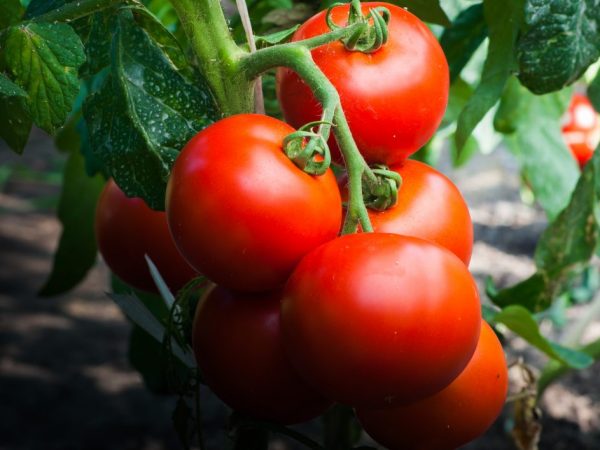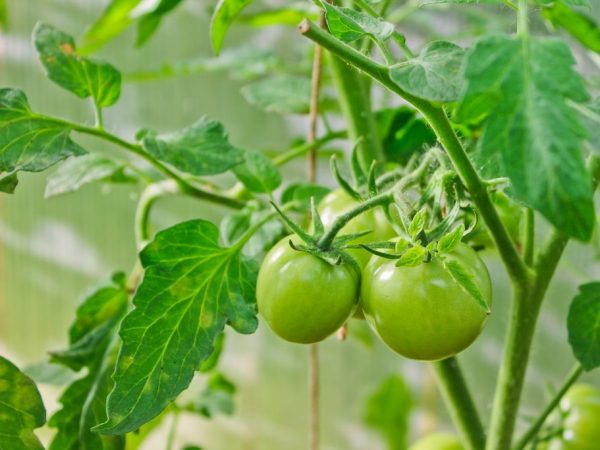Description of Liang tomato variety
Among agricultural crops, tomatoes are among the most common foods for sale. Many species differ in their taste and planting characteristics, but the Liang tomato is considered one of the most balanced varieties.

Description of Liang tomato variety
Due to its early ripening and high yield, Liang tomatoes are highly popular among farmers. The excellent characteristic of lyana tomato is confirmed by numerous positive reviews from agricultural owners.
Features of the tomato variety Liang
According to the description of the variety and the photo, the Liang tomato is distinguished by such qualities as early ripening, high yield and average fruit size. According to agricultural owners, this variety is unpretentious and suitable for both experienced farmers and beginners.
Due to its early harvest, the variety is in great demand among entrepreneurs, since the cultivation of such tomatoes helps to get the maximum profit due to low competition.
Characteristics of Liang tomato
- the plant is determinant;
- the height of the bushes reaches forty centimeters;
- leaves of medium size, slightly corrugated;
- the fruit is round in shape and weighs an average of eighty grams;
- depending on the species, the skin of tomatoes can be red, pink or raspberry;
- ripening period of tomatoes ninety-five days;
- the inflorescence is laid over the fifth leaf, after which the ovaries go with a frequency of two leaves;
- tomatoes have a sweet aftertaste and mild aroma.
According to the description of the variety, Liang tomatoes are a good basis for breeding work. With the help of this species, tomatoes such as Liana rosea and Kaspar F1 were bred. They are distinguished from the classic Liang variety by their color and shape. When buying seeds, carefully read the description of the variety and study the photos on the packages. If the tomato has a raspberry hue, then it is a pink look. Unlike the pure species that is consumed in food, this hybrid is more suitable for conservation or harvesting.
Benefits of the variety
Liang tomatoes have many positive reviews. The advantages of the variety include the following qualities of tomatoes:
- early maturity;
- easy landing method;
- long shelf life and transportability of tomatoes;
- high yield at open planting;
- resistance to diseases of bacterial origin.
disadvantages
There are also negative reviews about this species. Liang tomatoes have the following features:
- poor development of shoots in greenhouse conditions;
- increased vulnerability to tobacco mosaic virus and late blight.

The variety grows better on an open root.
This type of tomato, due to its unpretentiousness, is suitable for growing in suburban areas. However, for maximum yield, you should know the rules for planting this variety.
Seedling preparation
The Liang tomato variety can be planted in the soil using seeds, but for high yields, it is better to prepare seedlings. For this, wooden boxes and special soil rich in minerals are used.
The optimal period for sowing is February or early March. At the time of transplanting into the soil, the shoots should reach fifteen centimeters, so two months should pass from the moment of sowing. This type of tomato is sensitive to high humidity, so the greenhouse effect should be avoided. To do this, the bottom of the box must be covered with a layer of expanded clay, and then covered with earth. However, the seedlings should be watered regularly in the early days - the upper ball of the earth should not dry out. This can lead to root disease and plant death.
The greatest danger to young Liang tomato sprouts is cold. It is not recommended to water the seedlings in the evening if the boxes are near the window. Hypothermia can cause the death of seedlings due to necrosis of the root system.
Soil preparation and planting tomatoes
According to its characteristics, the Liang tomato variety belongs to unpretentious types of plants and the cultivation of this crop will not require large material costs. Liang tomato varieties produce more fruit in open planting than in greenhouse conditions, so the plant must be provided with a good area.
Liang tomatoes will grow well in areas where legumes or root vegetables were grown a year earlier. Do not plant seedlings in an area where carrots or cucumbers grew.
Soil preparation
Soil preparation should be started in the fall before the first frost. To do this, you need to perform the following actions:
- In November, the land should be dug up and fertilized with mineral components.
- The site in a loosened state is left for the whole winter.
- After the snow has melted, the ground must be drilled through and treated with alkali.
Shoots should be planted during a period when the temperature does not drop below freezing at night. Otherwise, Liang tomatoes may freeze. At the time of planting, Liang tomato seedlings for cultivation should reach fifteen centimeters and have several leaves and ovaries.
Planting shoots
Planting shoots of this variety has several features associated with the sensitivity of the species to increased moisture. To make the plant feel comfortable, you should:
- Pour a handful of compost and ash into the holes before planting.
- For burial, you need to use earth mixed with sand.
- Plant one shoot in the hole and bury the first leaves on the trunk.
- Around the bush will leave a small moat for comfortable watering.
If the soil has high humidity, then a handful of expanded clay should also be thrown at the bottom of each hole. Remember that the root system of seedlings is very vulnerable to mechanical injury, so beginners are advised to watch photos and videos of planting master classes.
Liang tomatoes do not need frequent watering. The first time they should be watered immediately after planting, after which the procedure is repeated after ten to fifteen days. Despite the fact that this variety does not tolerate moisture well, you do not allow dry land and cracks in the soil.
Bushes of this type of tomato are also vulnerable to direct ultraviolet light. On hot days, shade should be provided to the shoots, otherwise the ovaries may dry out. For this, you can use improvised materials or weeds.


